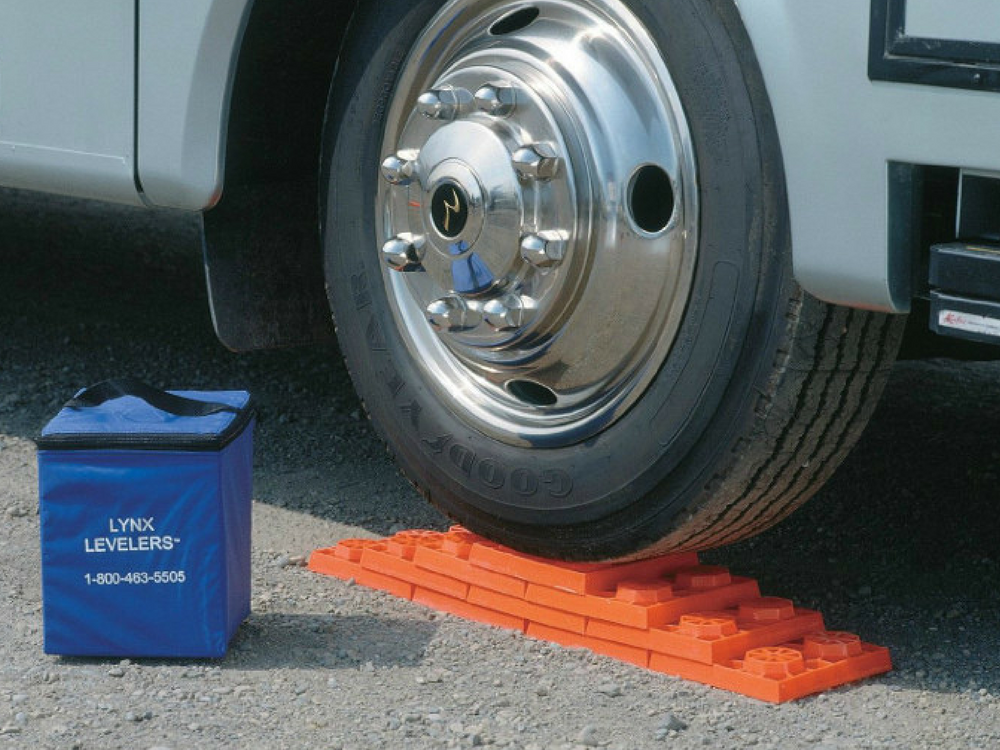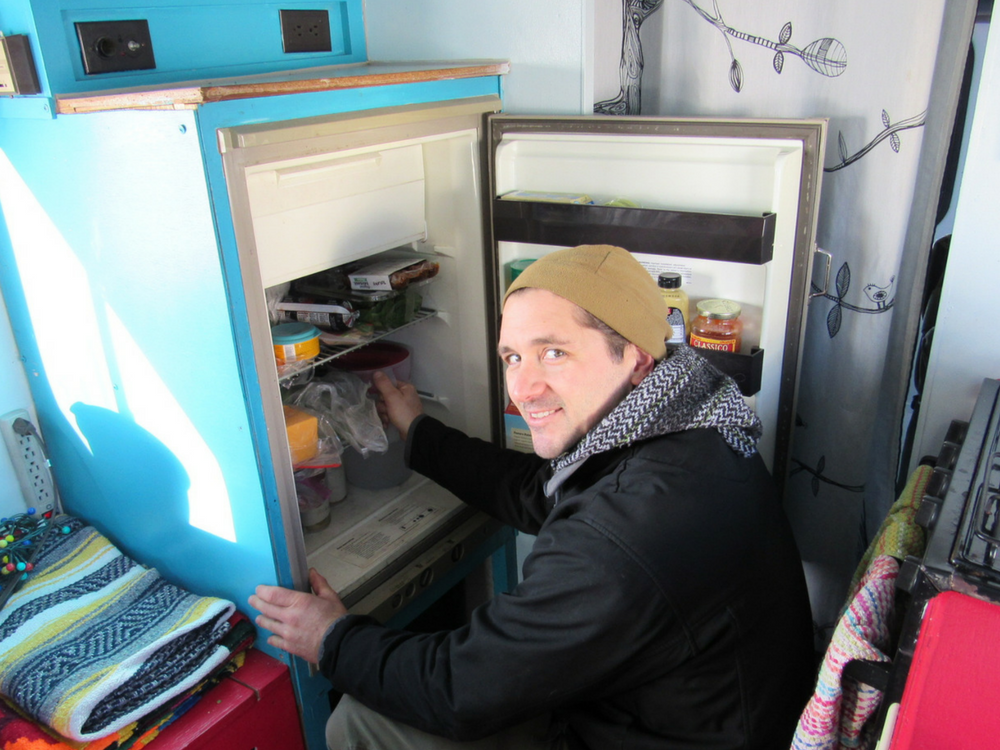
5 Ways To Make Your RV Refrigerator Work Better
As full-time RVers, we’ve learned to manage fitting our family’s food into an RV refrigerator rivals that of a college freshman’s dorm fridge.
What we will not accept is an RV refrigerator that doesn’t keep our food fresh, beer cold, and popsicles frozen. Here are 5 things you can do to make your RV refrigerator work the best it can.
1. Install a muffin fan inside your refrigerator
This is by far our number one recommendation to maximize the efficiency of your RV refrigerator. There’s a blower fan in residential refrigerators that helps circulate the cold air throughout the fridge and freezer, and this air circulation is critical in keeping all of your food at an equal and consistent cold temperature. For whatever reason, this component is lacking in RV refrigerators.
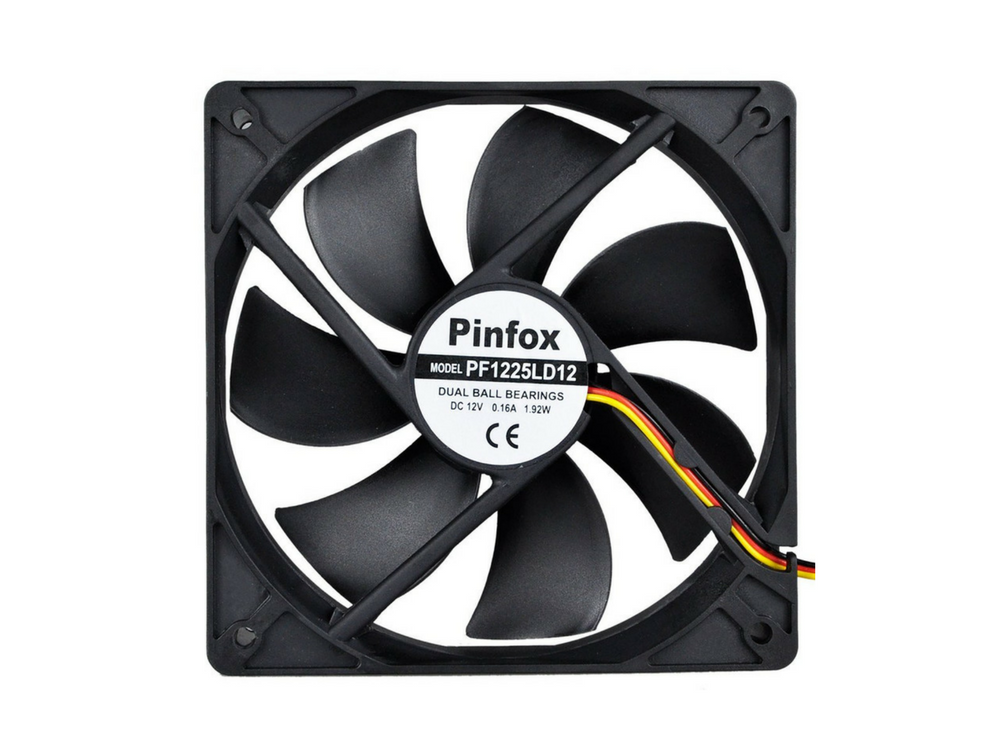
But don’t worry, there’s a relatively easy and cheap fix to this! A 12-volt DC muffin fan is inexpensive and can be installed inside your fridge and provide the airflow that it’s lacking.
Choose whichever size works best for your RV refrigerator and as long as it’s 12-volt DC, it can be hooked up using the same wires that power your refrigerator light. It’s not as straightforward as just plugging it in, but it can be done with minimal knowledge of electric wiring and some basic connectors.
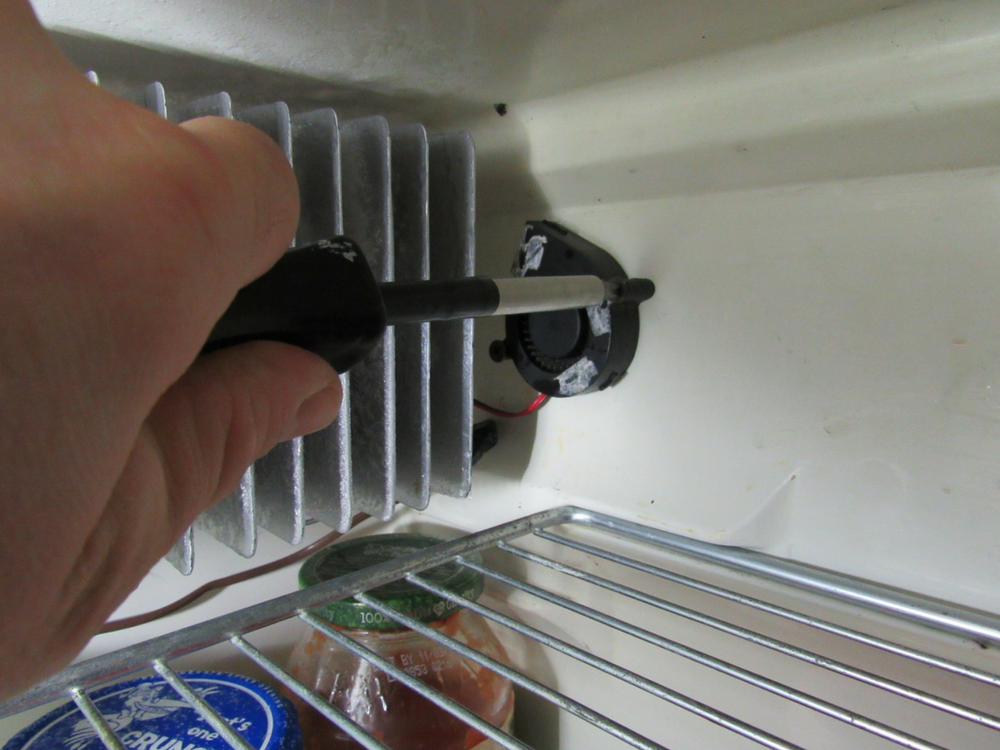
Be sure to mount it either on or near your evaporator coil so that it blows air over or around the fins.
2. Install a muffin fan on the condenser coil
This step isn’t as crucial as the first and a little more complicated, but it will definitely increase your RV refrigerator’s efficiency. To do this, you must first access the back of your refrigerator. Typically the easiest way to do this is by removing your outside vent cover. Once you’re back there, find the condenser coil and mount the muffin fan so that it blows over the coil.
What makes this a little more complicated is finding a place to wire the fan into. But since the fan runs on 12-volt DC, you can wire it into anywhere 12 volts are available.
3. Replace the door gasket seal
All refrigerators have a strip of magnetic vinyl that runs around the perimeter of the door. This provides a secure and tight seal when you close your refrigerator door. If this is damaged or worn from wear and tear, the seal is broken and cold air can get out and warm air in.
To replace an old door gasket seal, you can purchase a brand new door seal from whoever manufactured your RV refrigerator. Once you have the new seal in hand, remove the old door seal by simply using a putty knife or a pair of pliers to loosen and grab it and pull. Then take your new door seal and install it by pushing it into the groove that held your old door seal.
Once in place, close the door and do a visual inspection to ensure that there are no visible gaps between the seal, the door, and the refrigerator. Open and close the door a couple times and you should be able to feel the tightness of the seal.
If you’re looking for a less expensive fix or need a temporary fix until you receive the manufacturer’s door seal, here’s what you can do. Purchase some weather-stripping rubber intended for doors and windows, and measure and cut it to size for your RV’s fridge. Make sure that the corners are as tight as possible.
DO NOT remove your old door gasket seal. Instead prep it by cleaning it with some rubbing alcohol. Once it’s clean, take your cut pieces of rubber, peel off the back paper, and stick it directly on the old door seal. Close your door and you should be able to feel that the seal is tighter.
This solution is not as effective as replacing the door gasket seal, but it is by far better than rolling with a damaged seal that is letting cold air fall right out of your fridge.
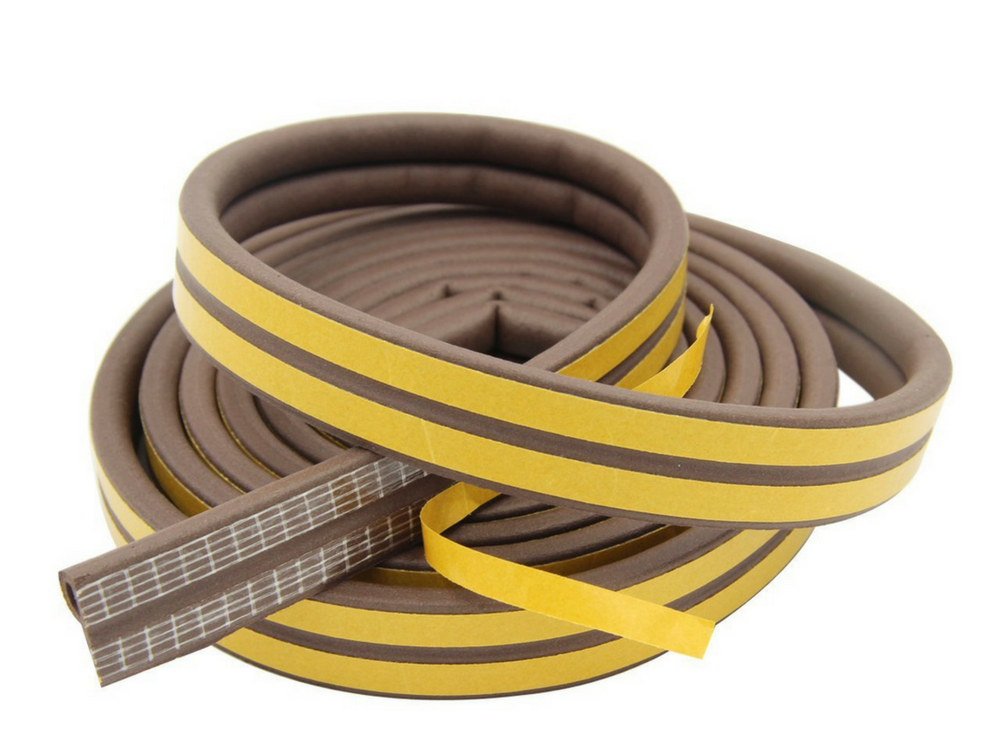
4. Perform preventive maintenance
As with any piece of equipment, inspection and maintenance of your RV refrigerator are important for performance and longevity. We recommend the following:
- Keep an eye on the evaporator inside your refrigerator. If ice starts to cover the fins, defrost your refrigerator or simply take a hair dryer and melt the ice.
- Don’t let your freezer become an ice block. We know it’s an easy thing to put off, but defrost it whenever necessary. Plus you’ll have more space once it’s done!
- Check the outside condenser coil and propane components at least once a year, especially if you haven’t used your refrigerator in awhile or if you’re experiencing problems. Remove the outside vent and check for any dust, cobwebs, nests, or general debris. If necessary, use compressed air to blow it clean or simply brush or wipe it clean.
- Keeping track of your maintenance with an online tool such as RV LIFE Maintenance.
5. Park level and keep your refrigerator side out of direct sunlight
Having a level rig will not only help you sleep better, but is also crucial to making sure your refrigerator works correctly and safely. Click here to find out how level is level enough and what to do if you can’t get level.
Besides being level, another thing to think about when parking that is generally less known is keeping the side of your RV with your fridge vent out of the sun as much as possible.
When the sun shines on the part of your rig where your vent is, the area where your condenser coil is will naturally warm up. This results in the opposite conditions necessary to maximize its efficiency. The cooler this area is, the better it works and the more efficient your refrigerator will run.
Having an RV refrigerator that runs the best will keep your food fresh, beer cold, and prevent food waste. Follow these tips and you’ll see an improvement in no time.

